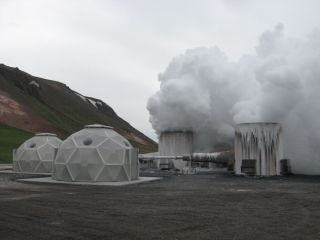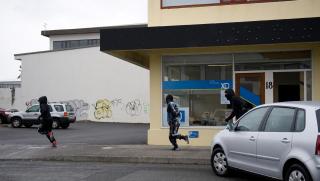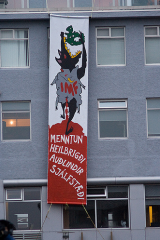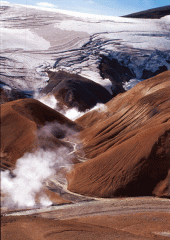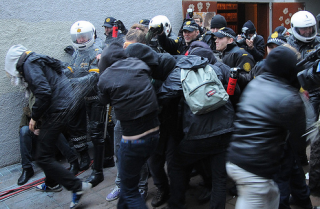'Rio Tinto Alcan'
Tag Archive
Jul 06 2010
ALCOA, Arms Industry, Bauxite, Century Aluminum, Economics, India, Mining, Pollution, Repression, Rio Tinto Alcan, Samarendra Das, Vedanta
Out of This Earth: East India Adivasis and the Aluminium Cartel
By Felix Padel and Samarendra Das
Published by Orient BlackSwan
Aluminium is a metal that many take for granted in hundreds of artifacts but fewer understand where it comes from and its real costs. Behind the shining image of aluminium is a dark side of environmental catastrophes, political manipulations and cultural genocide.
Out of This Earth: East India Adivasis and the Aluminium Cartel written by Felix Padel and Samarendra Das is an extraordinary book that explores the aluminium industry over its entire life cycle, from the mining of Bauxite to its various end uses.
With a foreward by Arundathi Roy it focuses on the Adivasis struggle against mining activities in the state of Odisha (former Orissa). There industrialization is imposed under the guise of development, growth and poverty alleviation, a process that has already displaced thousands of people and destroyed tribal society‘s structures. The book traces a hidden history of how one country after another has swallowed promises of prosperity and plunged into a cycle of exploitation and unrepayable debt. One of the real contributions of Out of This Earth is the commendable effort of the authors to painstakingly trace the forces that actually drive and control the global aluminium industry – how it is driven by a cartel that fuses mining companies, investment bankers, government deals, metals traders and arms manufacturers. Read More
Feb 08 2010
Landsvirkjun, Ministry of environment, Rio Tinto Alcan, Þjórsá, Þjórsárver
Svandís Svavarsdóttir, Minister of Environment, recently declined land-use plans made by the parishes of Flóahreppur and Skeiða- and Gnúpverjahreppur at the request of Landsvirkjun (National Energy Company), which had also paid for the preperations to the changes in the plans. The minister declined the land-use plans on the grounds that according to Icelandic law, such plan changes are to be paid for by the communities themselves, and any third-party involvement in the costs is illegal.
Of course the governmental opposition parties and their usual gang of industrial lobbyists are furious over the ruling, and critisice it heavily, displaying reactions the environmental minister described as being similar to allergic reactions. Amongst other things they accuse her of hindering those who are trying to build up work in the energy and industry sectors and blocking the creation of new jobs in a country they claim is ravaged by unemployment (approximately 8,6% at last count).
Read More
Nov 24 2009
Century Aluminum, Helguvík, Landsvirkjun, Rio Tinto Alcan, Tungnaá, Þjórsá
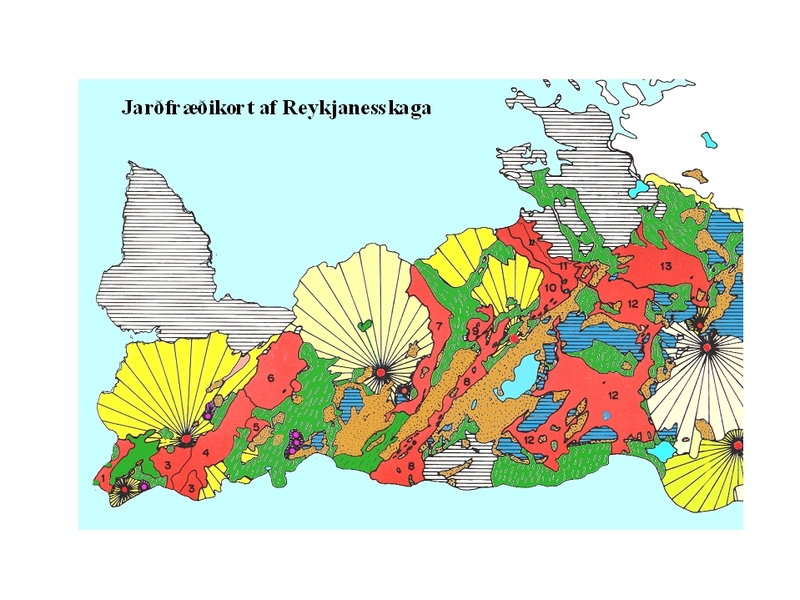 Last Saturday, November 21st, Jóhanna Sigurðardóttir, Iceland’s prime minister and the head of Samfylkingin (social democratic populist party), said that she is completely sure that all hindrances that could possibly stand in the way of the construction of Suðvesturlína (electricity lines) will be removed as soon as possible. Suðvesturlína is supposed to transport energy from the Hellisheiði geothermal powerplant (south of Reykjavík) and other energy sources to the Reykjanes peninsula, e.g. to run Century Aluminum’s new 360 ton smelter, which is currently being built in Helguvík.
Last Saturday, November 21st, Jóhanna Sigurðardóttir, Iceland’s prime minister and the head of Samfylkingin (social democratic populist party), said that she is completely sure that all hindrances that could possibly stand in the way of the construction of Suðvesturlína (electricity lines) will be removed as soon as possible. Suðvesturlína is supposed to transport energy from the Hellisheiði geothermal powerplant (south of Reykjavík) and other energy sources to the Reykjanes peninsula, e.g. to run Century Aluminum’s new 360 ton smelter, which is currently being built in Helguvík.
At the same opportunity, Sigurðardóttir announced her hopes for that Landsvirkjun (Iceland’s national energy company) could start construction of Búðarhálsvirkjun hydro-dam in Tungná river, early next spring. The energy from there is supposed to run increased aluminium production in Rio Tinto-Alcan’s smelter in Hafnarfjörður. Sigurðardóttir said that employment affairs must be the biggest issue for social democtrats in the upcoming regional elections that will take place in the spring of 2010. She raised her voice for the necessity of increased development with the help of “eco-friendly” energy sources.
Read More
Nov 17 2009
4 Comments
ALCOA, Alterra Power/Magma Energy, Amazon, Arms Industry, Bakki, Century Aluminum, Climate Change, Ecology, Economics, Geothermal Energy, Greenwash, H.S. Orka, Helguvík, Jaap Krater, Landsvirkjun, Mining, Miriam Rose, Reykjavik Energy, Rio Tinto Alcan, Saving Iceland, South Africa
By Jaap Krater and Miriam Rose
In: Abrahamsky, K. (ed.) (2010) Sparking a World-wide Energy Revolution: Social Struggles in the Transition to a Post-Petrol World. AK Press, Edinburgh. p. 319-333
Iceland is developing its hydro and geothermal resources in the context of an energy master plan, mainly to provide power for expansion of the aluminium industry. This paper tests perceptions of geothermal energy as low-carbon, renewable and environmentally benign, using Icelandic geothermal industry as a case study.
The application of geothermal energy for aluminium smelting is discussed as well as environmental and human rights record of the aluminium industry in general. Despite application of renewable energy technologies, emission of greenhouse gases by aluminium production is set to increase.
Our analysis further shows that carbon emissions of geothermal installations can approximate those of gas-powered plants. In intensely exploited reservoirs, life of boreholes is limited and reservoirs need extensive recovery time after exploitation, making geothermal exploitation at these sites not renewable in the short to medium term. Pollution and landscape impacts are extensive when geothermal technology is applied on a large scale.
Krater and Rose – Development of Iceland’s Geothermal Energy – Download as PDF
The full publication will be available from Jan. 15, 2010. ISBN 9781849350051.
Sep 16 2009
ALCOA, Century Aluminum, Chinalco, Husavík Energy, Rio Tinto Alcan, Tungnaá, Þjórsá
Chinalco, China’s biggest aluminium producer, has shown interest in buying a 32% share in Þeistareykir ehf., a geothermal energy company from the north of Iceland, owned equally by three companies; Landsvirkun (Iceland’s national energy company), Norðurorka and Orkuveita Húsavíkur (O.H. – Húsavík Energy). Norðuorka has shown interest in selling its share and according to information from the Chinesee Embassy in Iceland a committee from Chinalco will go north to Húsavík soon to discuss with those who the purchase concerns. Alcoa and H.S. Orka, which has been bought by the Canadian H.S. Orka, have also shown interest in buying a share in Þeistareykir ehf.
Chinalco owns 10% shares in Rio Tinto-Alcan, which owns an aluminium smelter in Hafnarfjörður, Iceland. Chinalco has been focusing on buying up companies in different metal industries and e.g. recently bought copper mines in Latin America from Ross Beaty, the director of Magma Energy, a Canadian geothermal energy company that is in the process of buying big shares in an Icelandic energy company, H.S. Orka and has mentioned the possibility of buying shares in Geysir Green Energy, the major owner of H.S. Orka.
The coming 1st of October, the memorandum of understanding between Alcoa, the government and Norðurþing county, expires. Norðurþing has announced their interest in renewing their contract with Alcoa, which is still looking for ways to use the geothermal energy from Þeistareykir. Read More
Apr 25 2009
Actions, ALCOA, Century Aluminum, Corruption, Democracy deficit, Economic Collapse, Economics, Greenwash, Kárahnjúkar, Landsvirkjun, Media bias, Ólafur Páll Sigurdsson, Rio Tinto Alcan, Saving Iceland
Olafur Pall Sigurdsson
Saving Iceland applauds the symbolic hits that the three pro-heavy industry political parties were dealt in the form of liberal splashes of green skyr (traditional Icelandic dairy product) on Monday.
According to Saving Iceland’s sources, three different groups, not just one, like the corporate media have claimed, did these actions almost simultaneously. Saving Iceland has also been informed that the activists were all Icelandic. It appears that this is a powerful group of activists, fighting the heavy industrialization of Iceland. Saving Iceland declares full support with the group.
The forces that stand behind Sjálfstæðisflokkurinn (Conservatives), Framsóknarflokkurinn (Right-wing opportunists) and Samfylkingin (New Labour equivalents), are guilty of what is tantamount to high treason with their heavy industry policy. Judging from their election propaganda, there is no sign that the parties have been willing to learn anything from the economic collapse about the expansion effects on the economy by heavy industry.
At the same time as these parties’ policy of uncontrollable greed has been pursued with the consequences of immense irreversible destruction of the country’s unique nature, this policy has just as much harmed Icelandic society as a whole. Read More
Apr 07 2009
ALCOA, Alterra Power/Magma Energy, Andri Snaer Magnason, Century Aluminum, Corruption, Democracy deficit, Economic Collapse, Economics, Energy Prices, Geothermal Energy, Jaap Krater, Kárahnjúkar, Landsvirkjun, Reykjavik Energy, Rio Tinto Alcan, Saving Iceland
John Perkins, the author of
The Confessions of an Economic Hitman, is currently in Iceland. Perkins is here to be at the premier screening of
The Dreamland, a documentary based on Andri Snær Magnason’s book, also titled
The Dreamland. Last Sunday, Perkins was interviewed in a political TV show on RÚV (the state television station) where he spoke about the threat of Icelandic resources being sold to foreign corporations and advised Icelandic authorities not to collaborate with the International Monetary Fund (IMF).
Perkins used to work for the U.S. National Security Agency and his job included “to convince poor countries to accept enormous development loans – and to make sure that such projects were contracted to U.S. companies,” as says on the back cover of his book. Perkins states that Iceland is the first ‘developed’ country in the world to be hit by the ‘Economic Hitmen’, referring to the invasion of the aluminium industry in Iceland. Read More
Feb 09 2009
ALCOA, Bakki, Bechtel, Century Aluminum, Climate Change, Dams, Ecology, Economic Collapse, Energy Prices, Geothermal Energy, Greenwash, Hengill, hydropower, IMF, Kárahnjúkar, Landsvirkjun, Miriam Rose, Reykjavik Energy, Rio Tinto Alcan, Saving Iceland, Þjórsárver
From New Renaissance Magazine
By Miriam Rose
The economic issues currently causing mass demonstrations in Iceland have a less publicised ecological cousin, and one which the IMF has recently identified as part of the economic collapse. In 1995 the Ministry of Industry and Landsvirkjun, the national power company, began to advertise Iceland’s huge hydropower and geothermal energy potential. In a brochure titled “Lowest energy prices!!” they offered the cheapest, most hard working and healthiest labour force in the world, the cleanest air and purest water – as well as the cheapest energy and “a minimum of environmental red tape” to some of the world’s most well known polluting industries and corporations (such as Rio Tinto and Alcoa). This campaigning has led to the development of an ‘Energy Master Plan’ aimed at damming almost all of the major glacial rivers in Iceland, and exploiting all of the geothermal energy, for the power intensive aluminium industry. The loans taken by the Icelandic state to build large scale energy projects, and the minimal payback they have received from the industry, has been a considerable contributing factor to the economic crisis, while at the same time creating a European ecological crisis that is little heard of.
The Largest Wilderness in Europe
I first visited Iceland in 2006 and spent a week with activists from the environmental campaign Saving Iceland, a network of individuals from around Europe and Iceland who decry the fragmentation of Europe’s largest wilderness in favour of heavy industry. From these informed and passionate folk I learned of the 690 MW Kárahnjúkar dam complex being built in the untouched Eastern Central Highlands to power one Alcoa aluminium smelter in a small fishing village called Reydarfjörður. The dams formed the largest hydro-power complex in Europe, and were set to drown 57 km2 of beautiful and virtually unstudied wilderness, the most fertile area in the surrounding highlands. Ultimately it would affect 3% of Iceland’s landmass with soil erosion and river silt deprivation. They also explained how materials in the glacial silt transported to the oceans bonds with atmospheric CO2, sinking carbon. The damming of Iceland’s glacial rivers not only decreases food supply for fish stocks in the North Atlantic, but also negatively impacts oceanic carbon absorption, a significant climatic effect. After taking part in demonstrations at the construction site of the Alcoa smelter (being built by famous Iraq war profiteers Bechtel), I went to see the area for myself. Read More
Jan 08 2009
Actions, Economic Collapse, Rio Tinto Alcan
From
Aftaka.org – On December 31st, we witnessed a unique action here in Iceland. Obviously it was not the all time climax in the history of Icelandic resistance compared e.g. to the 1949 riot, when Iceland joined NATO and people put up heavy resistance in Reykjavík. But first and all, it was a symbol for the waking up which is taking place in the Icelandic society – society that before was completely apathetic. And the action worked out perfectly in that we managed to do what we wanted, to disrupt and stop the TV transmission.
Hundreds of people had gathered by the government’s office, where flares were lit and people marched to Austurvöllur, the square in front of the parliament. The group then gathered by a statue of Jón Sigurðsson, Iceland’s so called independence hero. In few minutes a live TV program called Kryddsílsd, would take place. The program is an annual show where the ministers of the government and the heads of the political parties come together to drink themselves tipsy and talk about the political year that is about to end. Read More
Dec 18 2008
Economics, Landsvirkjun, Rio Tinto Alcan, Tungnaá
The construction of Búðarháls Dam (Búðarhálsvirkjun) in Tungnaá river, will probably be further delayed due to the uncertain future of Landsvirkjun´s financial possibilities. Landsvirkjun is Iceland’s national energy company. The construction was originally supposed to start early next year, after being delayed since 2003. The estimated cost is 25 billion Icelandic krónur.
Because of the collapse of the Icelandic banks and the international financial crisis, most possibilities for foreign loans are now frozen. Landsvirkjun’s long time financement is therefore quite uncertain.
“This mostly impacts new constructions, like Búðarhálsvirkjun” says Þorsteinn Hilmarsson, Landsvirkjun’s PR manager. “It is necessary to insure the future financement before the construction starts. ”
Read More

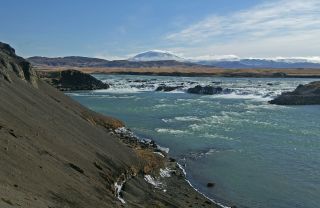
 Last Saturday, November 21st, Jóhanna Sigurðardóttir, Iceland’s prime minister and the head of Samfylkingin (social democratic populist party), said that she is completely sure that all hindrances that could possibly stand in the way of the construction of Suðvesturlína (electricity lines) will be removed as soon as possible. Suðvesturlína is supposed to transport energy from the Hellisheiði geothermal powerplant (south of Reykjavík) and other energy sources to the Reykjanes peninsula, e.g. to run Century Aluminum’s new 360 ton smelter, which is currently being built in Helguvík.
Last Saturday, November 21st, Jóhanna Sigurðardóttir, Iceland’s prime minister and the head of Samfylkingin (social democratic populist party), said that she is completely sure that all hindrances that could possibly stand in the way of the construction of Suðvesturlína (electricity lines) will be removed as soon as possible. Suðvesturlína is supposed to transport energy from the Hellisheiði geothermal powerplant (south of Reykjavík) and other energy sources to the Reykjanes peninsula, e.g. to run Century Aluminum’s new 360 ton smelter, which is currently being built in Helguvík.